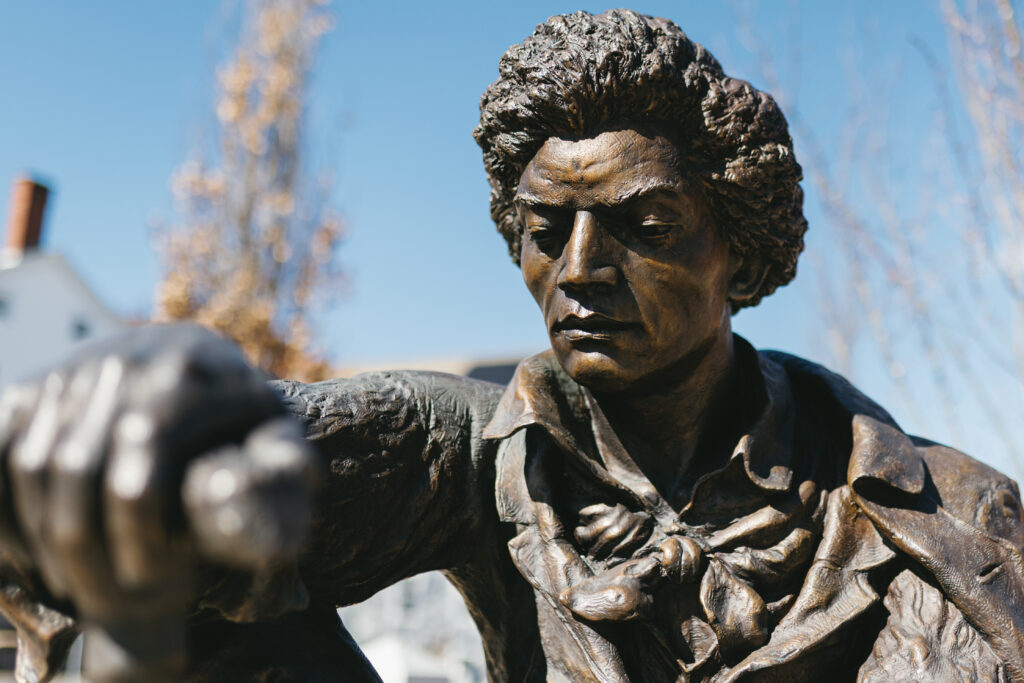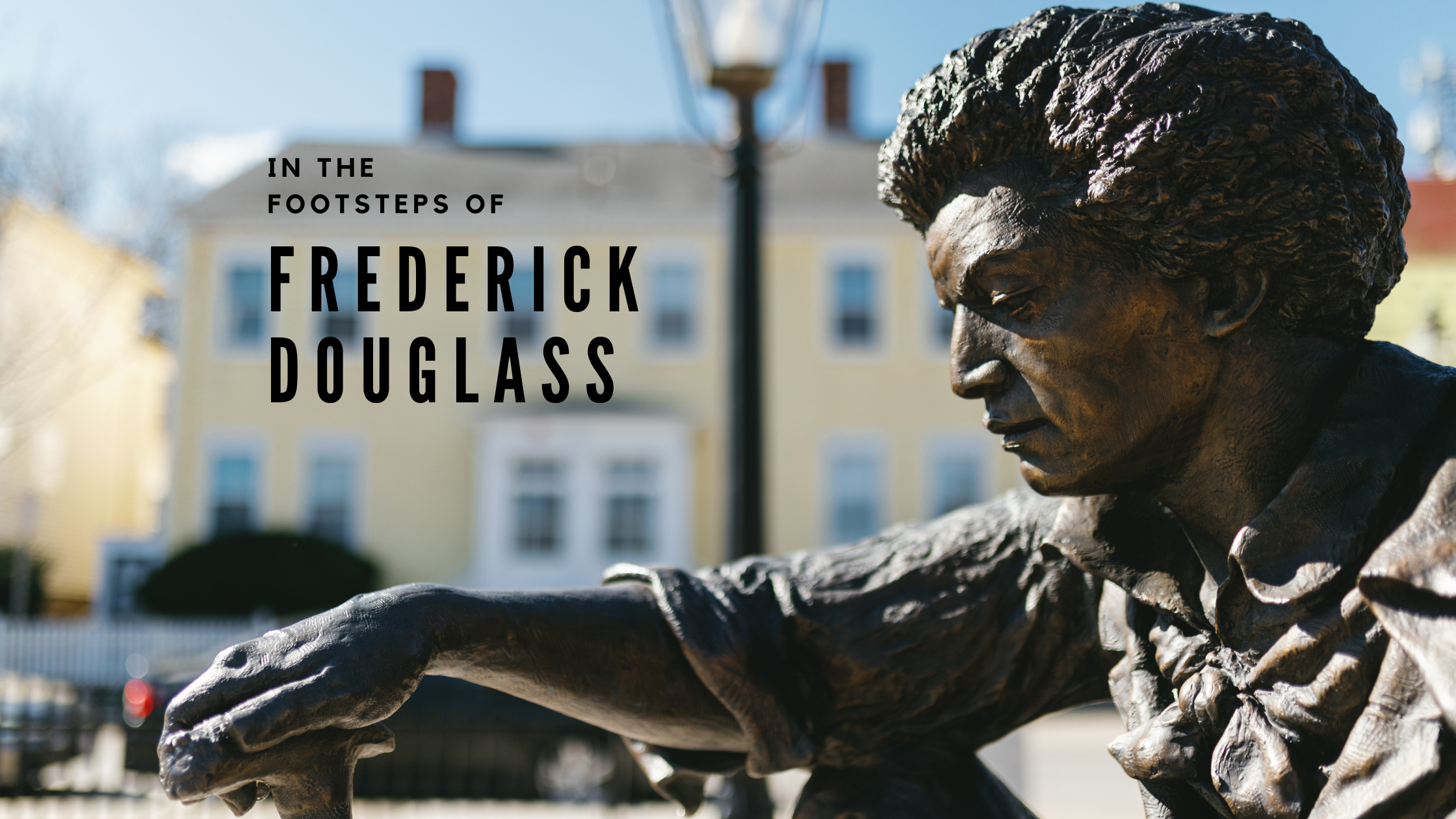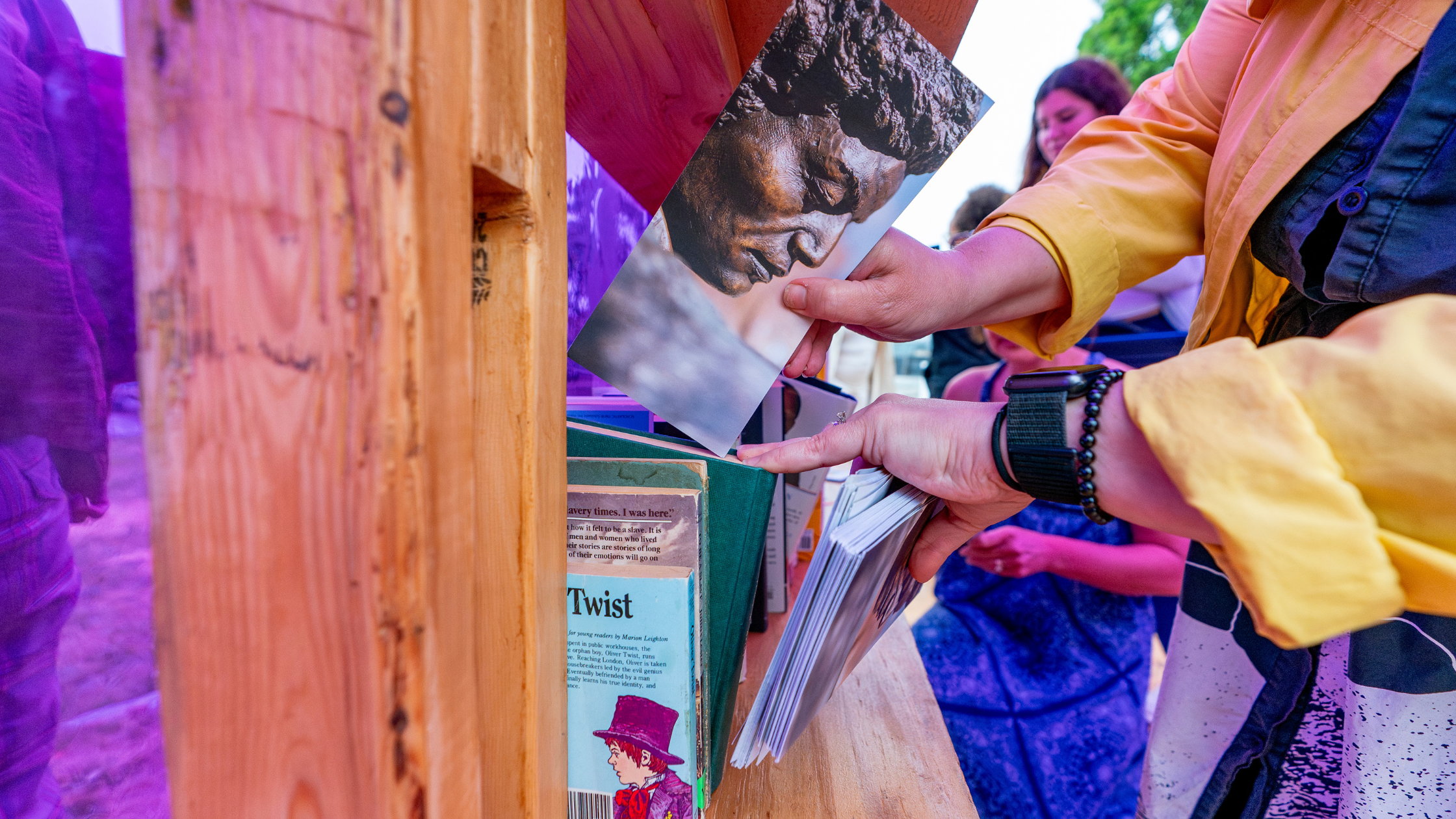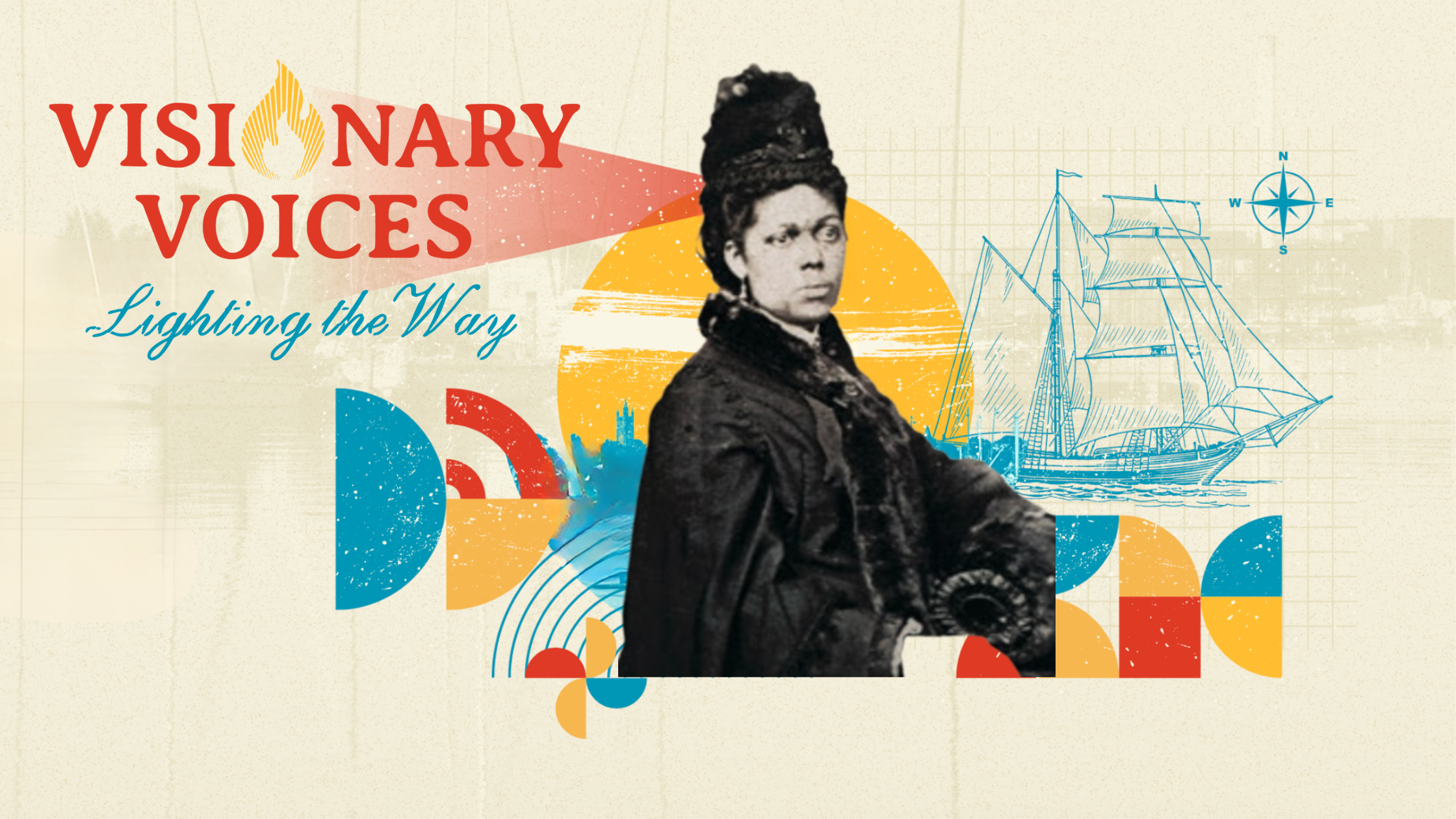Frederick Douglass escaped slavery by train, landing in New York City in September of 1838. After only a few short weeks, he departed for New Bedford, where he would find his first home as a free man and his powerful voice as an orator and activist.
Come see where Douglass lived and spoke, and how the city celebrates his life and legacy!
Nathan and Polly Johnson House
Nathan and Mary “Polly” Johnson were Black abolitionists who provided shelter for many enslaved families seeking freedom in the North. After escaping to New York City in 1838, Frederick Douglass married Anna Murray, a free Black woman he met when enslaved in Baltimore, Maryland. They traveled to New Bedford, where Douglass would first live as a free man in the home of Nathan and Polly Johnson. Today, you can schedule a tour of this home with the New Bedford Historical Society. The home is located at 21 7th Street in the Abolition Row Historic District and is a designated site on the National Park Service Underground Railroad Network to Freedom. It became a National Historic Landmark in 2000 and was added to the Network to Freedom in 2001. Check out the NB Historical Society’s Black History Trail, available as both a virtual tour and a self-guided walking tour.
Abolition Row Park

In 2023, Abolition Row Park was dedicated at 22 7th Street, located within the Abolition Row Historic District and directly across the street from the Nathan and Polly Johnson House. Within the park, discover a statue of Frederick Douglass by sculptor Richard Blake depicting Douglass in his thirties, the period of his life that he spent in the city. Read through educational and commemorative plaques and panels detailing New Bedford’s role in the Underground Railroad.
Gallery X
One of the city’s arts and culture hubs was formerly the Frederick Douglass Memorial African Methodist Episcopal (A.M.E) Zion Church in the 1930s. The structure was originally built in 1855 and served many denominations before becoming the home of the artist cooperative Gallery X in 1995. Douglass became active with the A.M.E., becoming licensed as a lay preacher in 1840 and telling his story before their congregation, launching his career in activism. Today, Gallery X honors his legacy with the Douglass Gallery, which is dedicated to showcasing art and exhibits related to the life and legacy of Douglass, including his time in New Bedford and the city’s abolitionist history.
New Bedford Free Public Library
Inside the New Bedford Public Library, located downtown at 613 Pleasant Street, you’ll find historical documents for reference to Douglass and New Bedford’s Black abolitionist community, including newspapers. Also inside the library is a monument to Frederick Douglass and Anna Murray. This plaque commemorates the 100th anniversary of his death in 1895.
Public Monument on City Hall Lawn
A stone slab memorial rests on the lawn out front of the William Street entrance of New Bedford’s City Hall at 133 William Street. A bronze plaque featuring Douglass’ likeness is set into the stone with a text engraving below. This plaque was also dedicated on the 100th anniversary of his death.
New Bedford Whaling National Historical Park
Let the New Bedford Whaling National Historical Park Visitor Center be your guide. Stop by for educational exhibits, brochures, and self-guided walking tour pamphlets. From May through October, join a guided walking tour, including the curated experience, “In the Footsteps of Douglass and Melville Walking Tour.” Check the Park’s calendar for tour updates.
Want to learn more about New Bedford’s visionary voices, revolutionary moments in the fight for freedom, and notable firsts as the city continues to “light the way” in creativity and innovation? Read more stories on our Visionary Voices: Lighting the Way page.
First Unitarian Church
Frederick Douglass earned wages by doing work for the First Unitarian Church’s minister, Ephraim Peabody. In one of his books, Life and Times of Frederick Douglass, Written by Himself, he explains the emotional significance of earning income as a free man. The Unitarian Church hosts the New Bedford Historical Society’s annual Frederick Douglass Read-a-thon in February, where participants read from his autobiography, Narrative of the Life of Frederick Douglass, An American Slave.



